Yosemite National Park transforms into a water wonderland during peak waterfall season, typically from late spring through early summer. The park’s granite cliffs create perfect conditions for some of the most spectacular cascades in North America, and many visitors assume they need serious hiking gear and mountain climbing experience to see them. The reality is much more encouraging for casual adventurers and families.
While Yosemite boasts over 20 significant waterfalls, many of the most impressive ones are surprisingly accessible. Here is a list of 16 Yosemite waterfalls you can reach easily without extensive hiking or rock climbing skills.
Bridalveil Fall
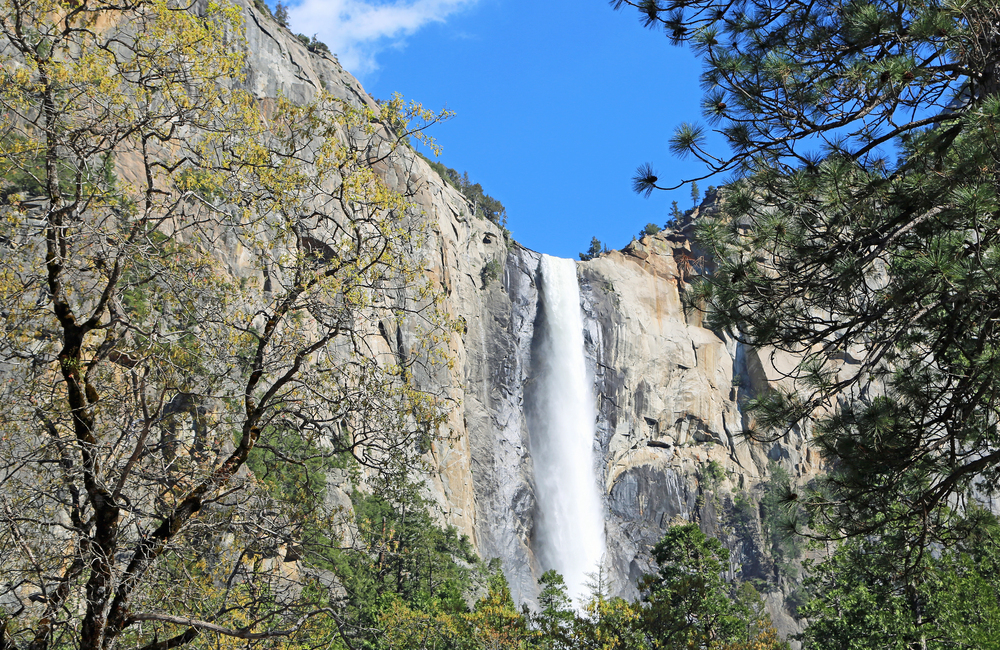
This 620-foot waterfall serves as Yosemite’s welcoming committee, greeting visitors right as they enter the valley. The paved trail to the base takes about 20 minutes of easy walking, making it perfect for families with small children or anyone who wants immediate waterfall gratification. During peak flow in season, the mist creates rainbows that dance across the spray, and the Ahwahneechee people considered this sacred water that would bring good fortune to those who walked through it. The fall maintains decent flow even during drier months, though by late summer it becomes more of a graceful ribbon than a thundering cascade.
Lower Yosemite Fall
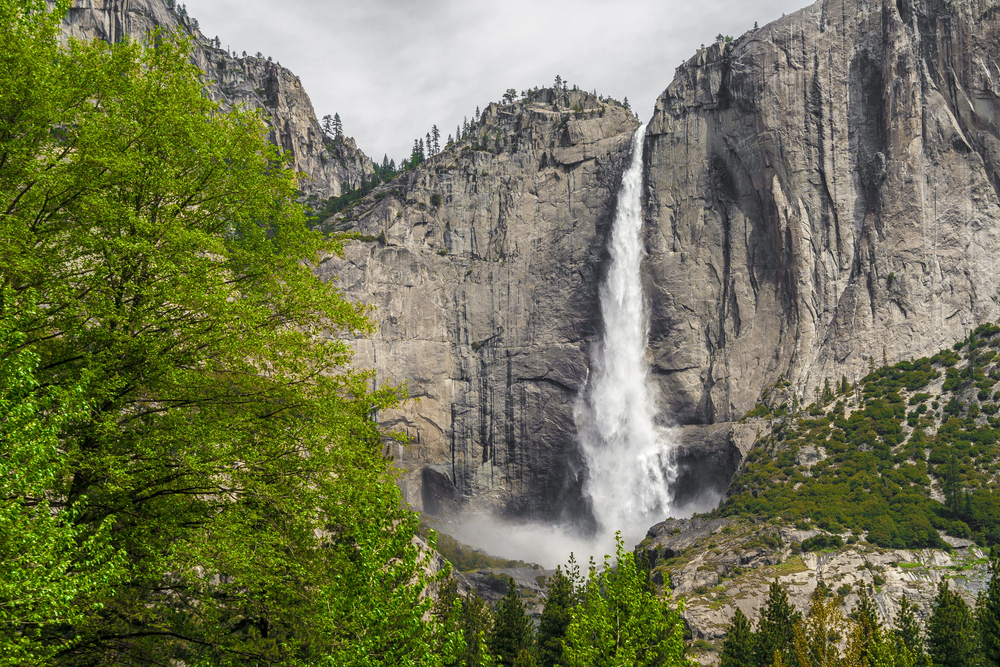
At 320 feet, this represents just the bottom tier of North America’s tallest waterfall, but it packs plenty of punch on its own. The one-mile loop trail from the valley floor is completely paved and relatively flat, making it one of the most accessible waterfall hikes in the park. Spring visitors often get soaked from the powerful spray, which feels refreshing after the walk but can be intense enough to drench anyone who gets too close. The viewing area provides excellent photo opportunities, and unlike its upper counterpart, this waterfall remains visible and accessible year-round.
Swinging Bridge View of Yosemite Falls
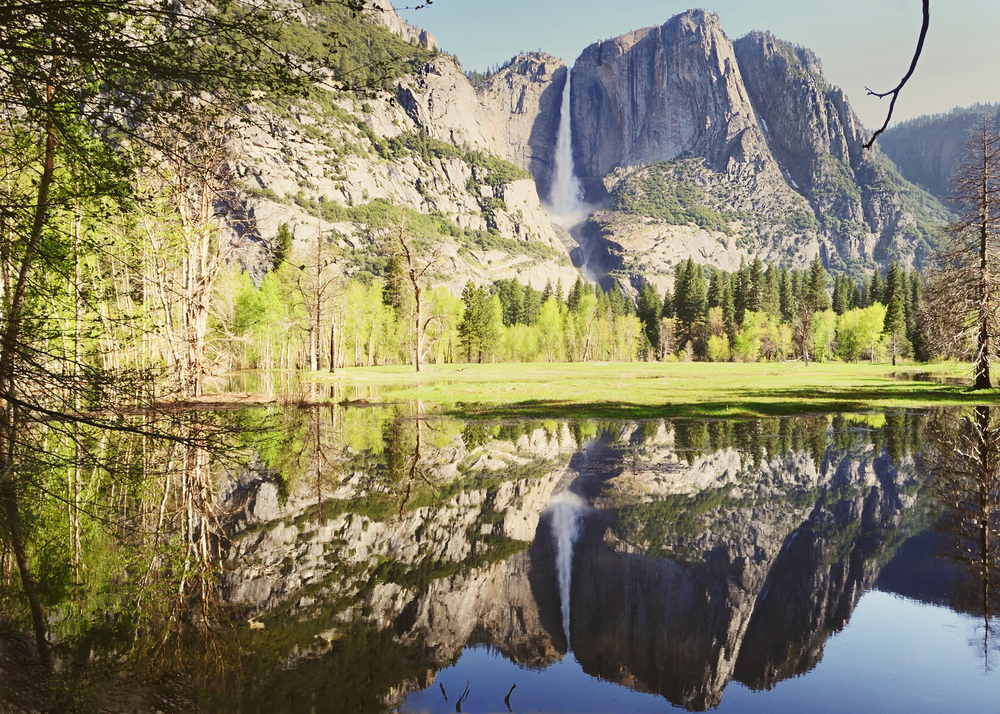
Sometimes the best waterfall views require the least effort, and this spot proves that point beautifully. The historic Swinging Bridge, built in 1928, offers an unobstructed view of the entire 2,425-foot Yosemite Falls without any hiking required. You can drive right up to the parking area and walk just a few hundred feet to this iconic viewpoint. The bridge itself has become almost as famous as the waterfall, appearing in countless photographs and postcards over the decades.
Cascade Falls
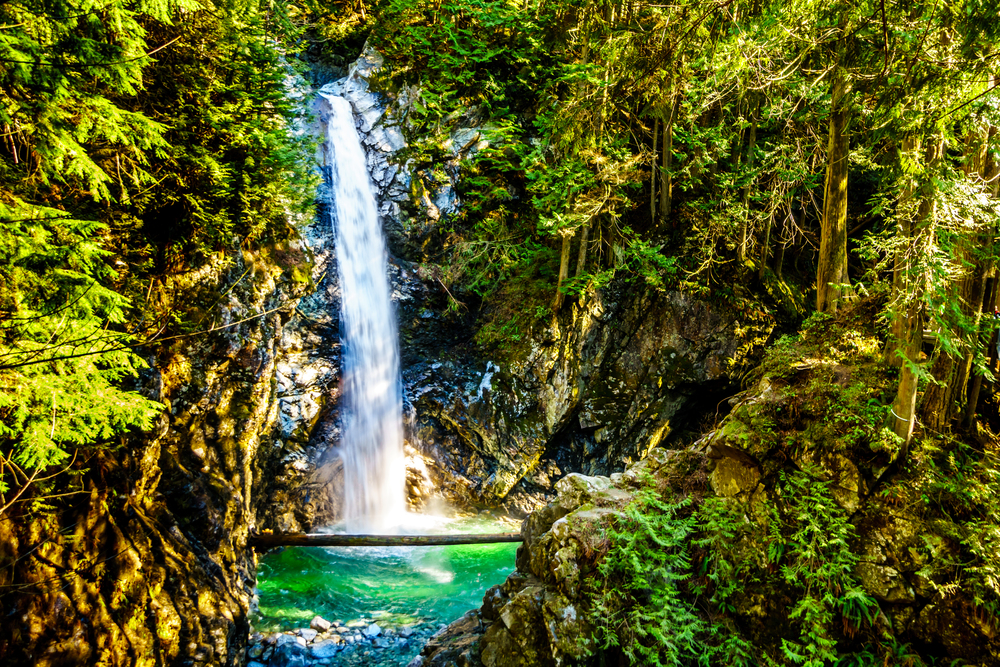
This hidden gem near the Cascade Creek requires only a short walk from the parking area along the Big Oak Flat Road. The 500-foot waterfall tumbles down a series of granite steps, creating multiple pools that reflect the surrounding forest. During spring runoff, the fall roars with impressive volume, while late summer reveals the intricate rock formations that channel the water. The relatively easy access makes this a great alternative when the valley floor becomes crowded with tourists.
Illilouette Fall
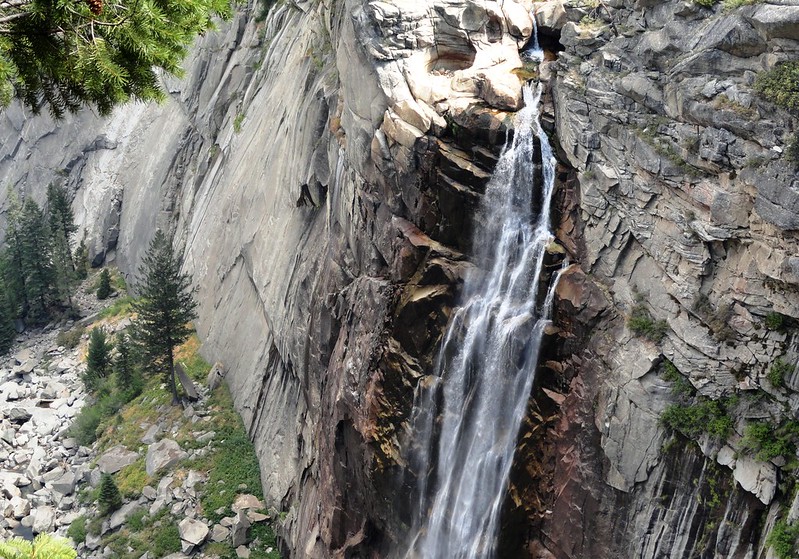
While many visitors focus on the famous valley waterfalls, this 370-foot cascade offers a more secluded experience just a short walk from the Panorama Trail. The fall drops over a granite cliff in a single, powerful plunge that creates a misty microclimate around its base. The approach involves about a mile of moderate hiking, but the trail is well-maintained and offers several viewpoints along the way. Spring and early summer provide the most dramatic displays, when snowmelt turns the normally gentle creek into a rushing torrent.
Horsetail Fall
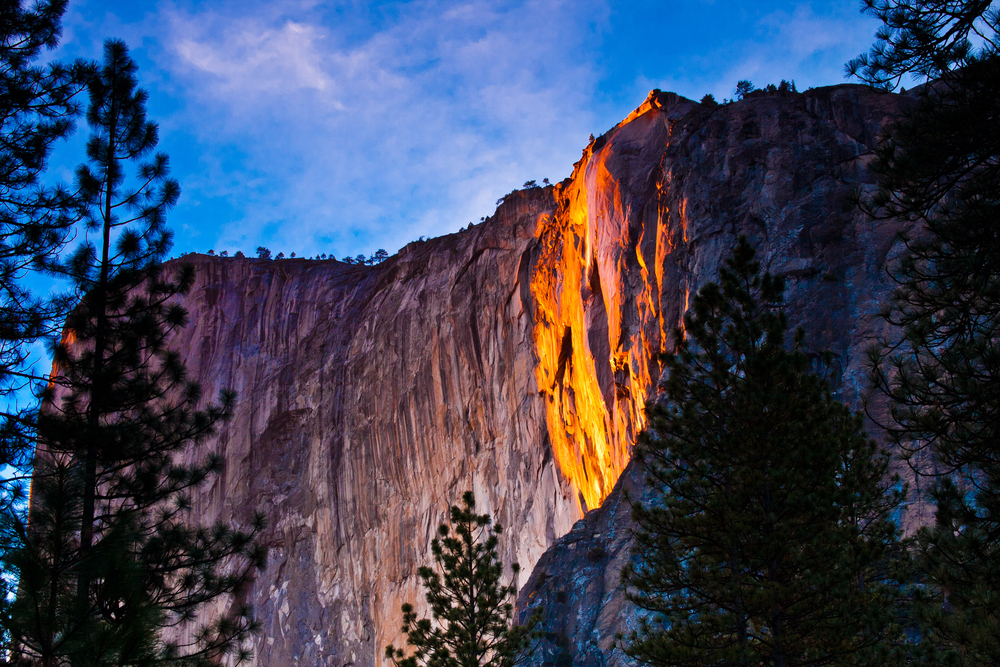
This seasonal wonder becomes one of the world’s most photographed waterfalls for about two weeks each February when conditions align perfectly. The 1,550-foot fall only flows during years with sufficient snowfall, making each viewing a special occasion. When the setting sun hits the water at just the right angle, the fall appears to glow like molten lava, creating the famous ‘firefall’ effect that draws photographers from around the globe. The viewing area requires only a short walk from the parking area near El Capitan Bridge.
Ribbon Fall
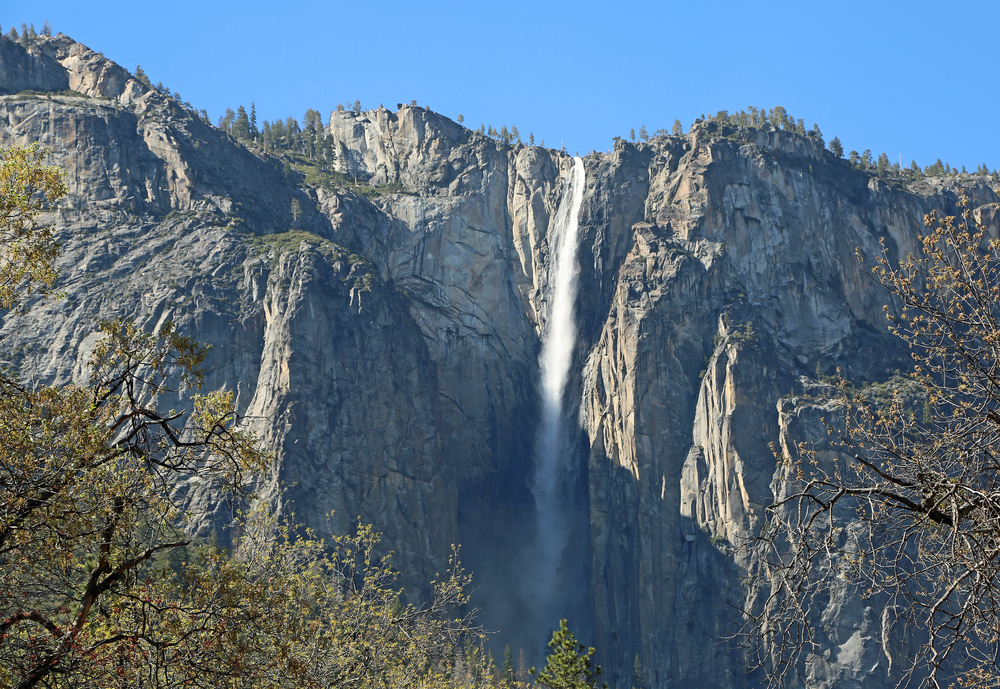
Standing at 1,612 feet, this slender waterfall claims the title of Yosemite’s tallest single-drop fall, though it flows only during heavy snowmelt years. The fall drops from the rim of El Capitan in a graceful ribbon that often gets blown sideways by valley winds. Most visitors can easily spot it from various valley floor locations, particularly from El Capitan Meadow. The ephemeral nature of Ribbon Fall makes any sighting feel like discovering a secret, since it typically disappears by midsummer.
Wapama Falls
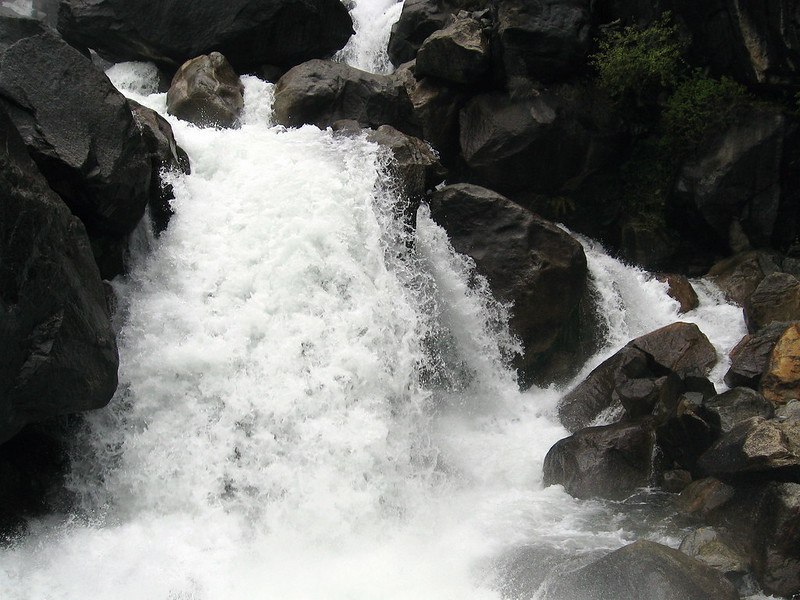
Located in Hetch Hetchy, this 1,080-foot waterfall requires a pleasant 2.5-mile walk along the reservoir’s edge. The relatively flat trail follows the top of O’Shaughnessy Dam and continues along the granite shoreline, providing stunning views of the water and surrounding peaks. During peak flow, Wapama Falls crashes into the reservoir with such force that spray can drench hikers on the trail. The fall maintains good flow longer than many Yosemite waterfalls due to its large drainage basin in the high country.
Tueeulala Falls
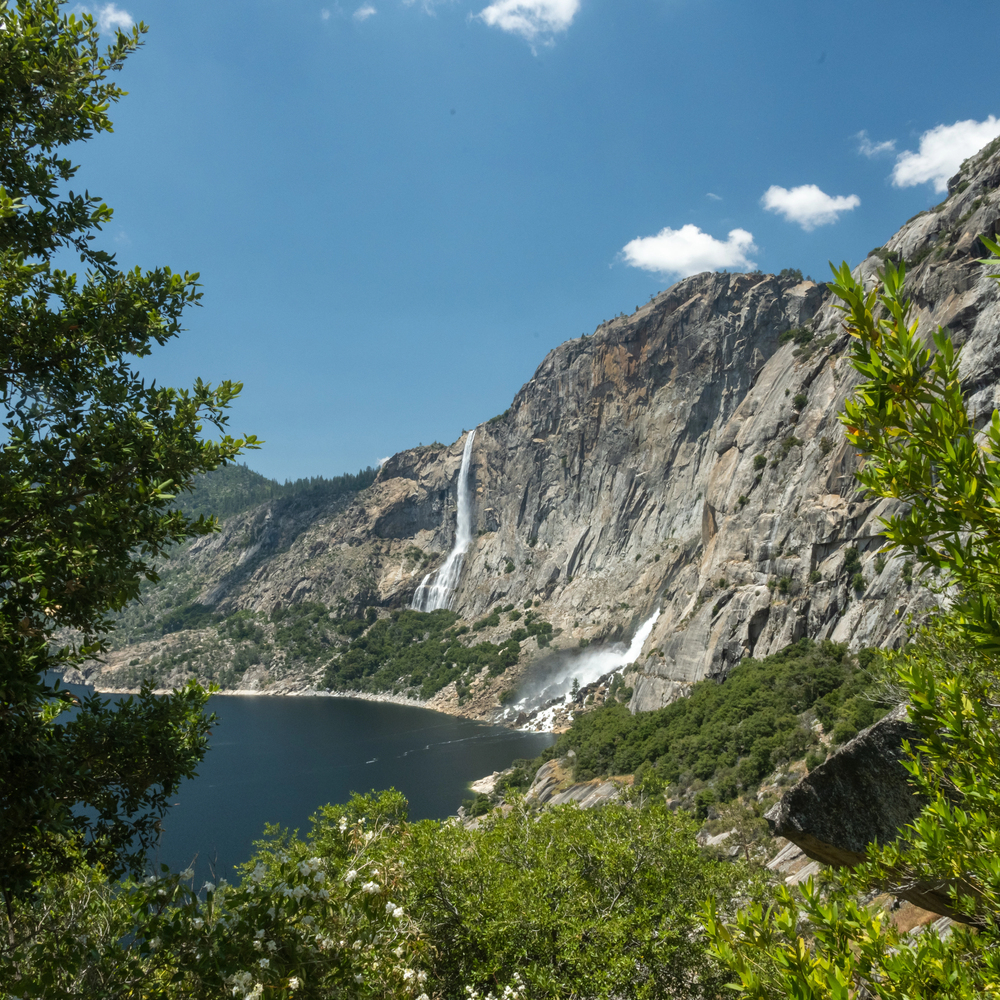
DepositPhotos
This 840-foot cascade sits right next to Wapama Falls, making it possible to visit both waterfalls on the same easy hike. The fall plunges directly into the Hetch Hetchy Reservoir in a series of granite steps, creating a more delicate appearance than its powerful neighbor. The same 2.5-mile trail serves both waterfalls, and the viewing area provides excellent photo opportunities with the reservoir and surrounding cliffs as backdrop. Many visitors find Tueeulala Falls more photogenic than Wapama due to its graceful proportions and clear drop into the water.
Sentinel Fall
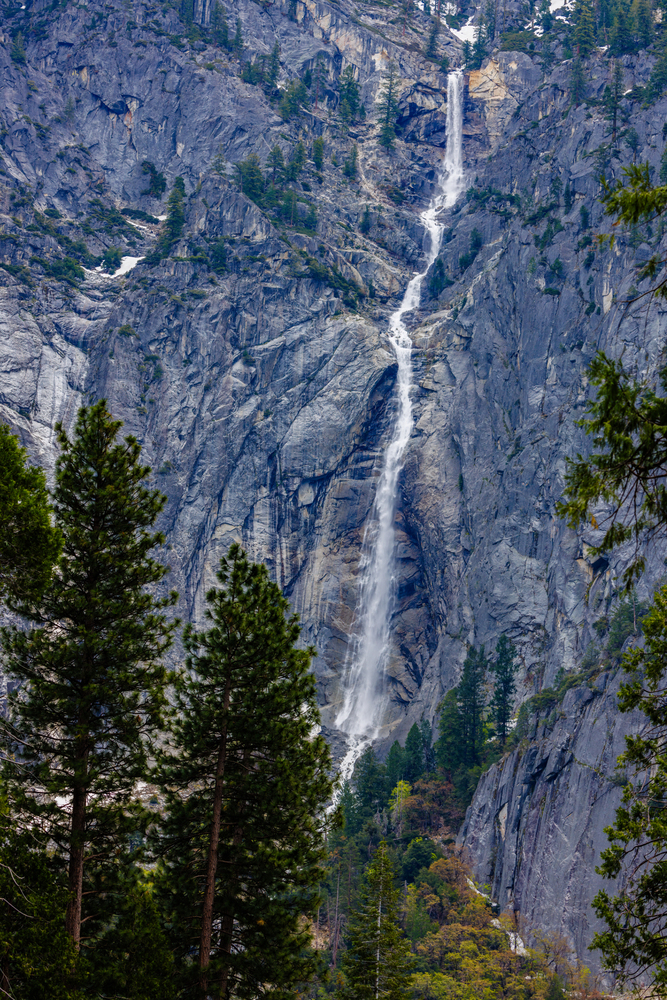
This 2,000-foot waterfall system drops from the rim near Glacier Point in multiple tiers, creating one of the valley’s most dramatic backdrops. The fall is easily visible from numerous valley floor locations, particularly from the Swinging Bridge area and Four Mile Trail parking. During peak flow, the upper portion creates a misty cloud that drifts across the granite face, while the lower section provides a more consistent water display. The fall’s position catches afternoon light beautifully, making it a favorite subject for photographers who don’t want to hike to remote locations.
Lehamite Falls
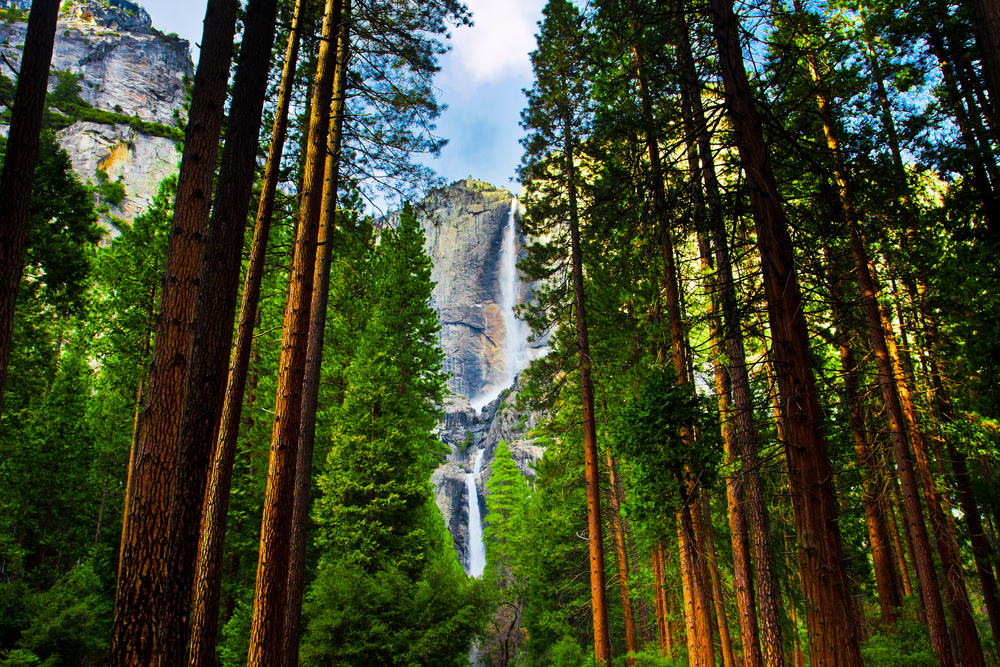
This 1,180-foot waterfall flows only during years with heavy snowpack, making it one of Yosemite’s most unpredictable cascades. When it does flow, the fall can be seen from various valley floor locations, particularly from the area near Yosemite Lodge. The fall drops from the rim in a series of steps, creating a staircase effect down the granite cliff. Its seasonal nature means that seeing Lehamite Falls flowing represents a special treat that even regular Yosemite visitors might miss.
Staircase Falls
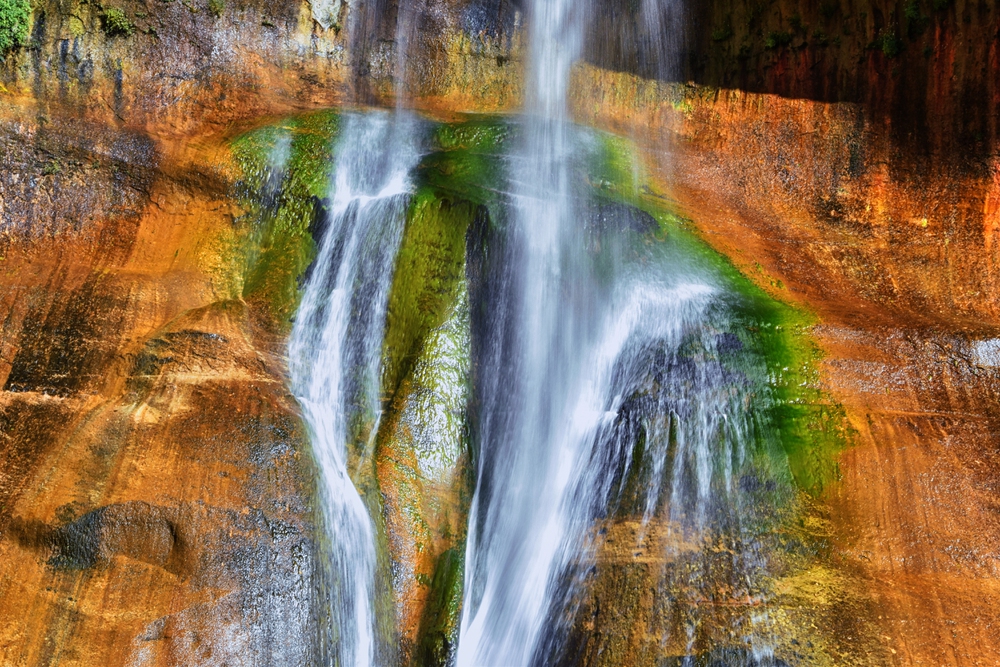
True to its name, this waterfall descends the granite in a series of steps, creating pools and cascades that resemble a giant’s staircase. The fall sits high on the valley’s south wall and can be viewed from multiple locations on the valley floor. During spring runoff, each step creates its own small waterfall, combining to form an impressive display that stretches down the cliff face. The stepped formation makes this waterfall particularly photogenic, as each level catches light differently throughout the day.
Royal Arch Cascade
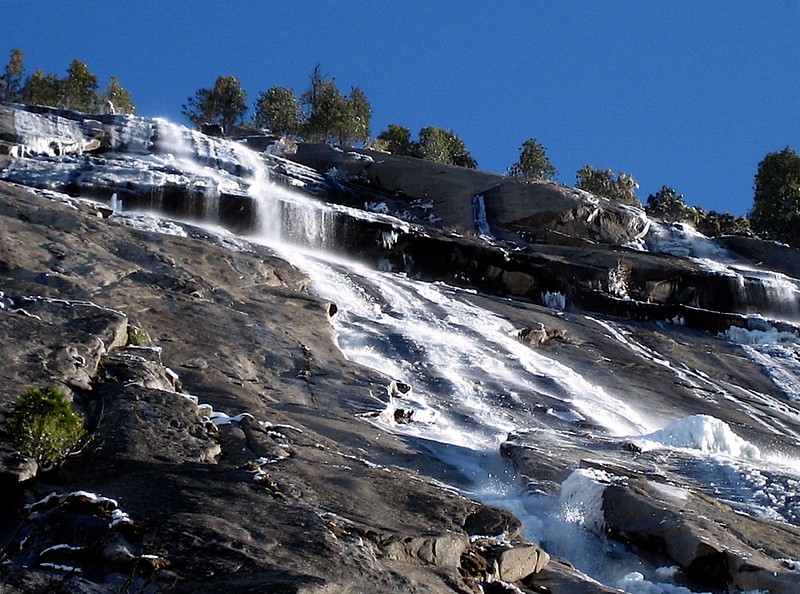
This seasonal waterfall appears on the north wall of Yosemite Valley, flowing only during periods of heavy snowmelt or rainfall. The cascade drops approximately 1,250 feet in multiple tiers, creating a silvery ribbon against the dark granite. Most visitors can spot it from the valley floor near the Royal Arches formation, though it requires good timing since the fall often dries up by early summer. The waterfall’s location makes it visible from the popular Mirror Lake area, adding another reason to take that easy walk.
Silver Strand Falls
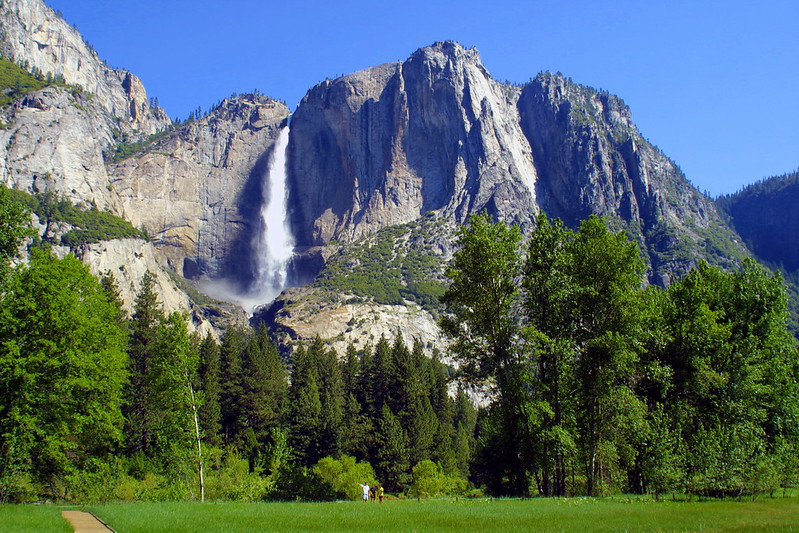
0
This delicate 574-foot waterfall flows down a granite cliff in what appears to be multiple silver threads, giving it an ethereal quality that contrasts with Yosemite’s more powerful cascades. The fall can be viewed from several valley floor locations, particularly from the area near the Ahwahnee Hotel. During peak flow, the multiple strands create a lace-like pattern against the granite, while lower flow periods reveal the individual channels that create the stranded effect. The fall’s graceful appearance makes it a favorite for visitors who appreciate subtle beauty over raw power.
Wildcat Falls
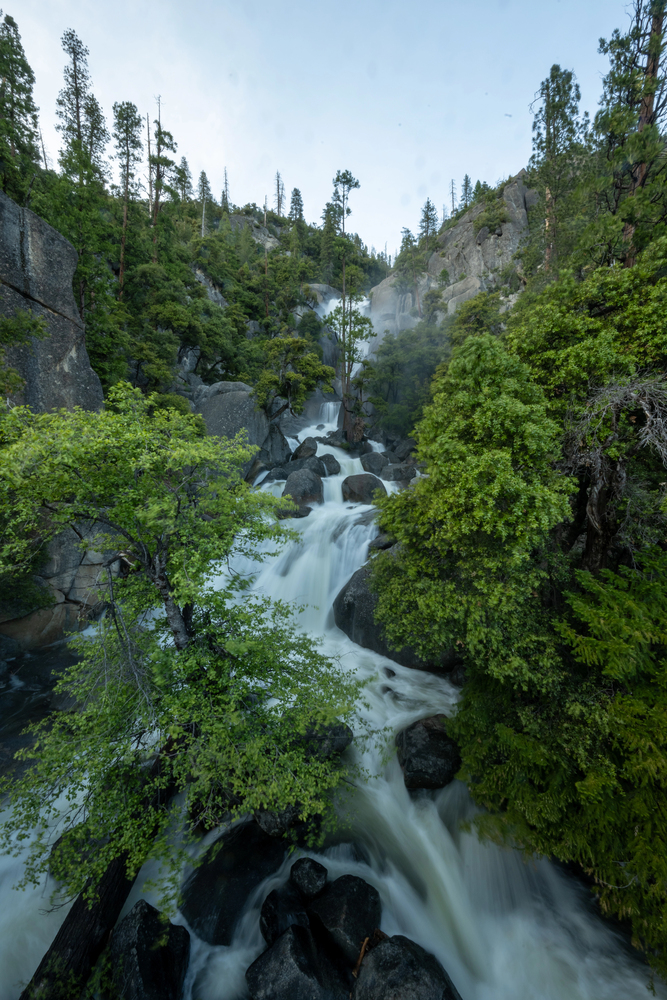
Located near the Tuolumne Grove area, this lesser-known cascade offers a peaceful alternative to Yosemite Valley’s more crowded waterfalls. The fall drops about 600 feet in a series of granite steps, creating pools that reflect the surrounding forest. A short walk from the parking area provides access to several viewpoints, and the relatively few visitors make this an ideal spot for quiet contemplation. The fall maintains a decent flow through much of the year due to its protected drainage basin.
Pywiack Cascade
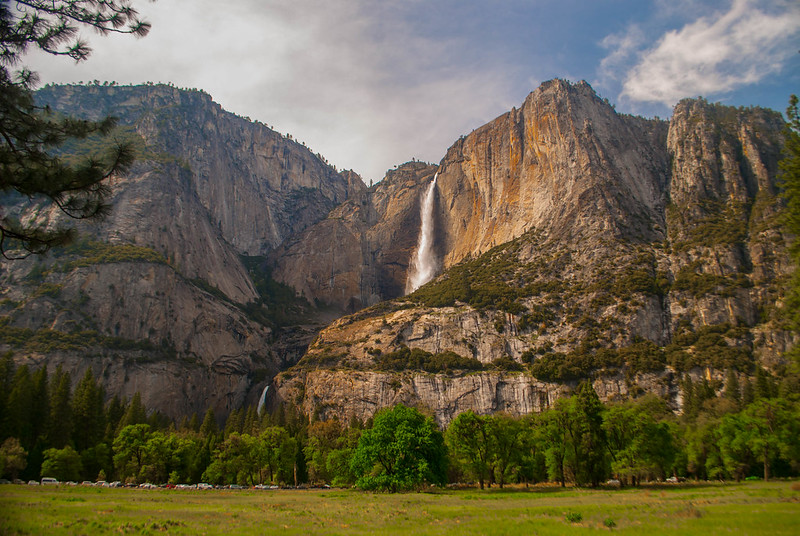
This series of cascades flows down the granite slabs in Tenaya Canyon, creating a beautiful display that’s visible from the Tioga Pass Road. The water slides down smooth granite in multiple channels, forming pools and rapids that stretch for several hundred feet. The cascade is easily accessible from pullouts along the road, making it perfect for travelers who want to experience Yosemite’s high country waterfalls without significant hiking. During peak flow, the entire granite face becomes a sheet of moving water punctuated by natural channels and pools.
Nature’s Enduring Theater
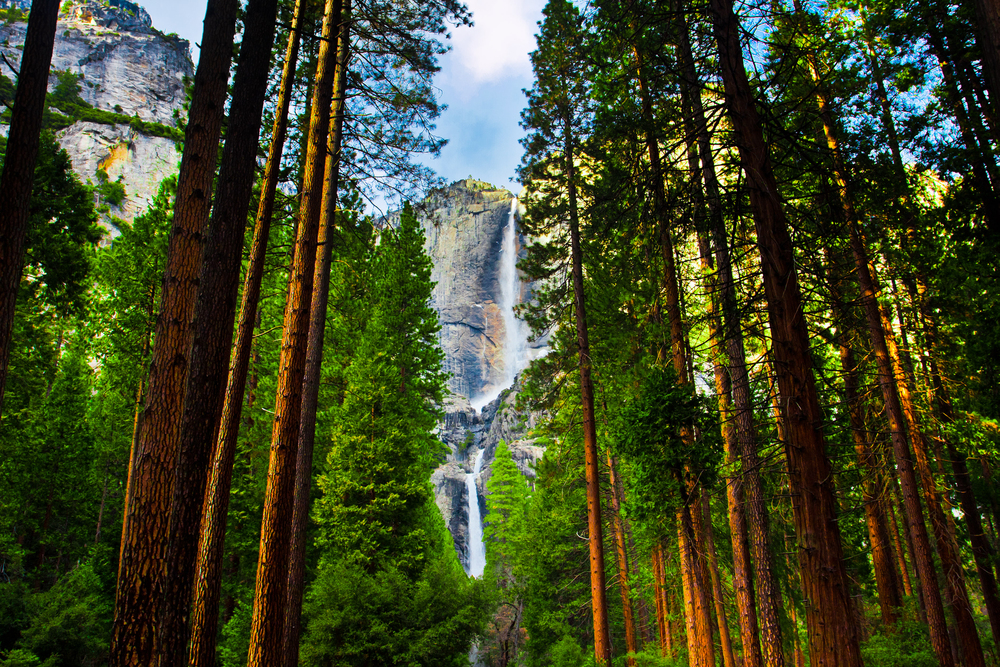
These accessible waterfalls represent just a fraction of Yosemite’s aquatic treasures, yet they demonstrate how the park’s ancient geological forces continue shaping the landscape today. The same glacial activity that carved these valleys millions of years ago still influences how snowmelt and rainfall create these temporary and permanent water features. Each waterfall tells a story of granite formation, glacial movement, and seasonal water cycles that connect modern visitors to the natural processes that built this landscape. While some of these falls flow only during perfect conditions, others provide reliable displays that have welcomed travelers for generations. The accessibility of these waterfalls ensures that Yosemite’s water magic remains available to anyone willing to take a short walk and look up at the surrounding cliffs.
More from Travel Pug

- 20 Best Beach Towns in the Carolinas
- 13 Destinations Where Tourists Regularly Regret Their Trip
- 20 Things You Actually Get in First Class
- 20 Small Airports With Aviation Museums
- 20 Places in the U.S. That Are Perfect for a Reset Trip
Like Travel Pug’s content? Follow us on MSN.
